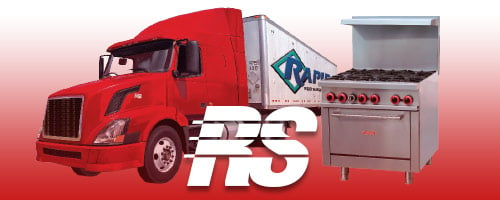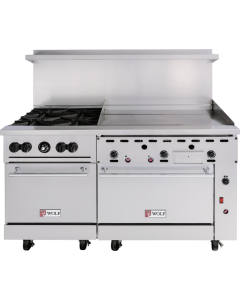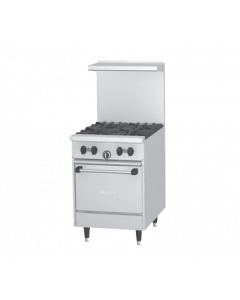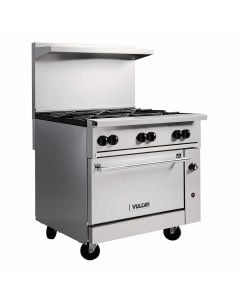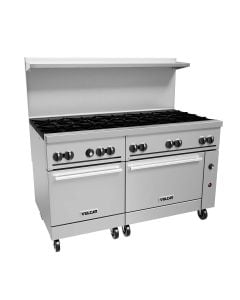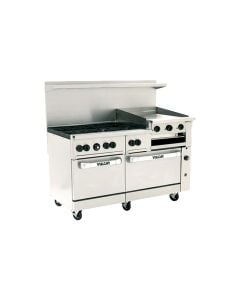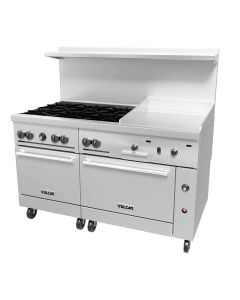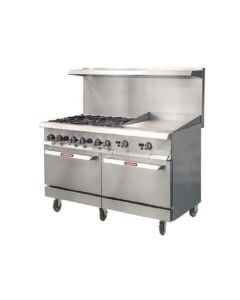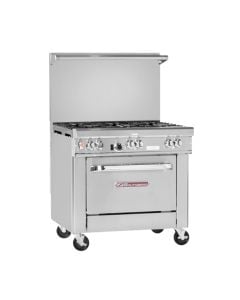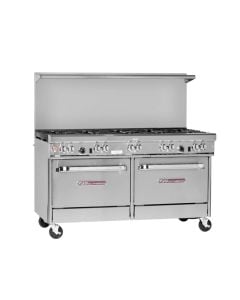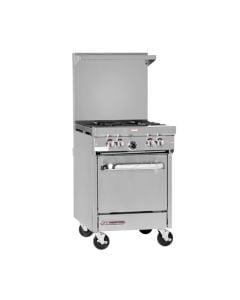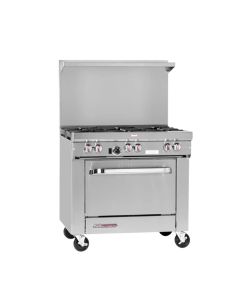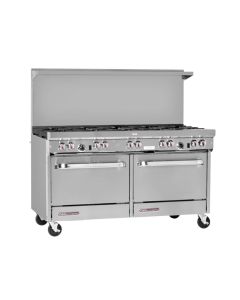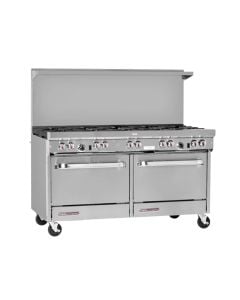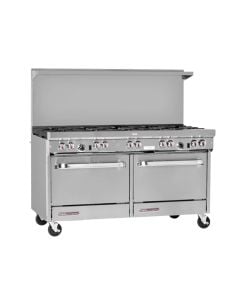Electric & Gas Ranges
We offer the ideal gas or electric range for your restaurant, featuring a variety of commercial ranges and ovens to suit your kitchen's needs. Choose from models with four, six, or ten burners, or opt for a combination unit with burners, a griddle, and a broiler for added versatility. Explore our selection at Rapids Wholesale to find the perfect fit for your establishment.
-
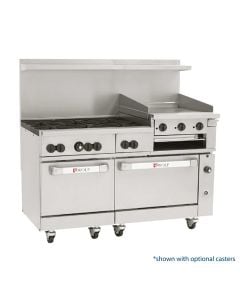 Wolf C60SS-6B24GB Challenger XL 60" Gas Range | 6 Burners | 24" Griddle-Broiler$9,980.002X Bonus Points
Wolf C60SS-6B24GB Challenger XL 60" Gas Range | 6 Burners | 24" Griddle-Broiler$9,980.002X Bonus Points -
-
-
-
-
Vulcan 60SS-6B24GB Endurance 60" 6-Burner Range w/ 2 Ovens | 24" Griddle/Broiler | LP$10,151.002X Bonus Points
-
Vulcan 60SS-6B24G Endurance 60" 6-Burner Range w/ 2 Ovens | 24" Griddle | LP$8,220.002X Bonus Points
-
Southbend 4361D Ultimate 36" Gas Range, 243,000 BTU, 6 Burner, 1 Oven, 36" Width$3,805.002X Bonus Points
-
Southbend 4601DD Ultimate 60" Gas Range, 420,000 BTU, 10 Burner, 2 Oven, 60" Width$7,058.002X Bonus Points
-
-
-
-
Southbend S60DD-2GL S-Series 60" Gas Range, 6 Burner, 1 Left-Side Griddle, 2 Ovens$5,500.002X Bonus Points
Commercial Ranges for Restaurants
A commercial gas range is a kitchen appliance that runs on natural gas, propane, butane, liquefied petroleum gas, etc. and is used to cook food.
A restaurant range is one of the main pieces of equipment that restaurants cannot do without. This is because commercial ranges for restaurants are used for a variety of purposes from cooking to grilling and broiling, important cooking jobs that any commercial kitchen would require. These days, commercial kitchen ranges come in many different sizes and configurations to suit any food-service business's demanding needs and are usually sturdier, more heavy-duty, and are more suited to frequent and regular use than to those used in the home.
The very first gas ranges were developed as early as the 1820s, but those are considered rare experiments. The very-first patented gas range was invented in 1826 in England. However, it wasn't until the 1880s that the first true commercial gas ranges came out.
Today, a modern commercial gas range usually utilizes two basic types of ignition sources: standing pilot and electric. A stove with a standing pilot has a small, continuously burning gas flame, also called a pilot flame, under the cooktop. The advantage of using a commercial gas range with this type of ignition source is that it is simple and is completely independent of any outside source of power. One minor disadvantage, however, is that the flames continue to consume fuel even though the stove is not in use. On the other hand, a gas kitchen range that utilizes an electric ignition uses electric sparks to ignite the surface burners. The sparks are initiated after turning the gas burner knob to a certain position or by pressing an ignition button. Once the burner lights, the knob is turned further to adjust the size of the flame.
Commercial Electric Ranges
A commercial electric range converts electrical energy into heat in order to cook and bake food. Electric stoves were invented in the late nineteenth century and immediately became popular alternatives for solid-fuel stoves that used wood or coal and which needed more labor to operate.
One advantage of using commercial electric ranges as opposed to their gas counterparts is, obviously, safety. Because an electric commercial range doesn't use gas, there is no risk of gas leaks. And leaking gas can be ignited by the pilot flame, with disastrous consequences.
Another advantage of electric commercial ranges is that they are they are more functional compared to gas ranges. For instance, you can add fans or top and bottom grillers to provide more functions for electric stoves, something that you cannot do with gas-powered stoves.

